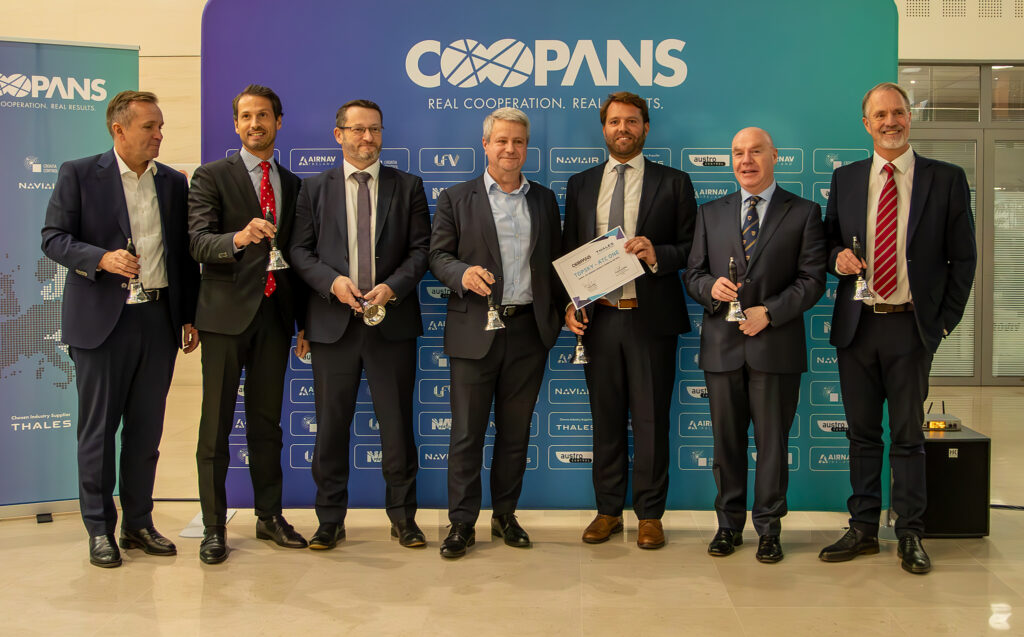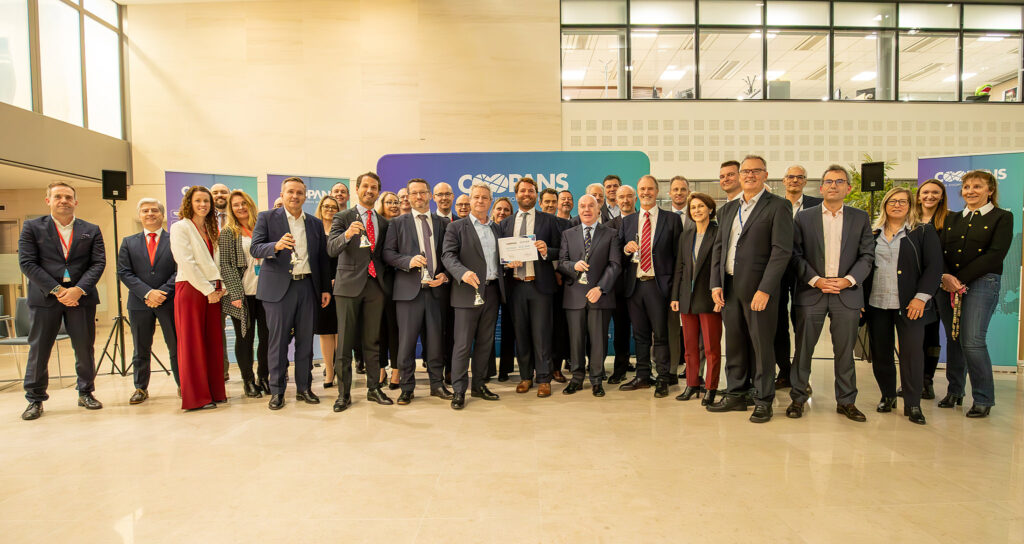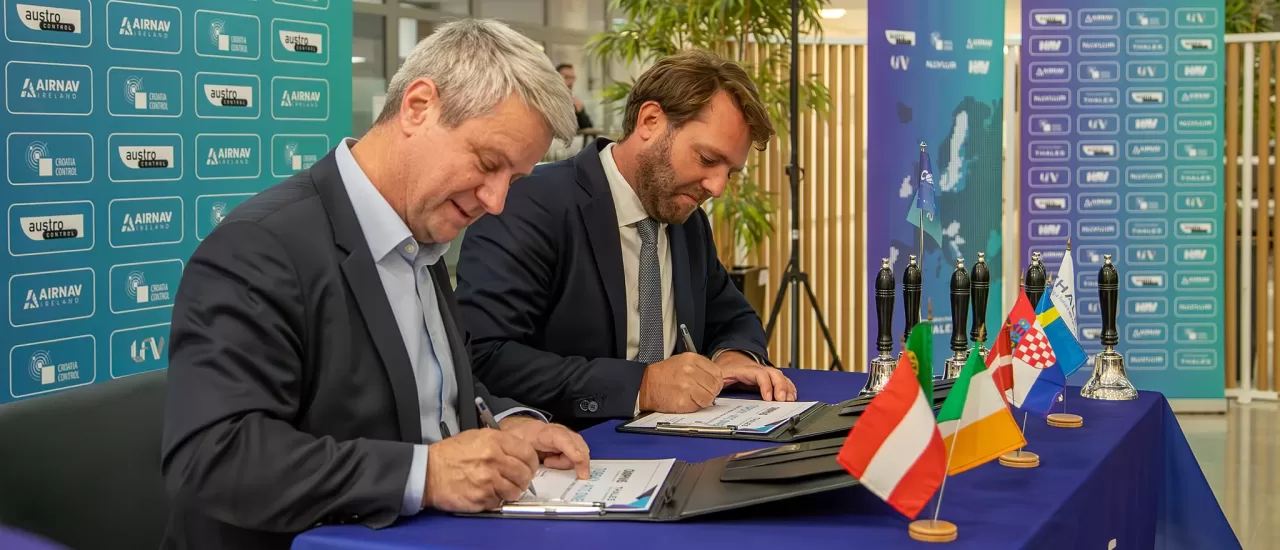On November 19, 2024, the CEOs of the six COOPANS Air Navigation Service Providers (ANSPs): COOPANS Alliance Board Chair Philipp Piber, Austro Control, Mario Kunovec-Varga, Croatia Control, Dr. Peter Kearney, Airnav Ireland, Ann Persson Grivas (represented), LFV, Anders Rex, Naviair, and Pedro Angelo, NAV Portugal, came together at Thales Headquarters at Rungis in France to officially launch the next phase of ATM System modernization in Europe, paving the way for the implementation of the system upgrade TopSky-ATC One.
The TopSky-ATC upgrade will enable COOPANS to improve air traffic management in Europe through advanced features that will lead to a better and faster coordination, and more precise decision-making for air traffic controllers, allowing them to handle more flights. The enhanced user interface will provide the clearer visualization of essential information and optimized ergonomics to streamline operations.
The upgraded system will strengthen the integration of radar data and flight plans, enabling better surveillance and greater accuracy in detecting aircraft trajectories. The advanced real-time decision support capabilities will facilitate the management of complex situations, thereby improving the safety and productivity of air operations.
With this upgrade, COOPANS is also decisively moving forward in line with the ambitious Single European Sky (SES) project of the European Union, which aims to harmonize and optimize air traffic management across Europe, creating a single and efficient airspace.

“The upgrade of our system to the state-of-the-art TopSky-ATC solution is a significant milestone in order to be able to manage increasing air traffic in a safe, efficient and sustainable way in the future. A modern, open, and modular ATM system will ensure flexibility, adaptability, and interoperability, enabling a seamless integration of new technological advancements. The commitment and professionalism of all our staff, who worked so hard on the specifications for the system modernization, played a key role in ensuring that we could continue with this highly successful cooperation,” said COOPANS Alliance Board Chairman Philipp Piber.
“We are pleased that COOPANS has selected Thales’ TopSky-ATC One offering, including its system upgrade and innovative governance model. This decision ensures that COOPANS will benefit from the most advanced air traffic control (ATC) technology available, as Thales continues to lead the evolution of the industry. By partnering with Thales, COOPANS will enhance interoperability, efficiency, and safety in air traffic management. Together, we are shaping the future of airspace, advancing toward a more integrated and sustainable system in line with the ambitious objectives of the Digital European Sky project.”, said Christian Rivierre, VP Airspace Mobility Solutions, Thales.
Thanks to a new governance model, Thales ensures that the priorities of its Air Navigation Service Provider customers are met, enabling the continuous evolution of the TopSky-ATC solution to consistently address industry demands while improving the safety, efficiency, and sustainability of air operations across Europe.
The system upgrade is currently in the development phase. Until 2028, hardware deployment, software integration, and intensive validations will take place in parallel, along with operational and technical training. The implementation of the upgraded system in COOPANS is planned in three waves from 2028 to 2030.

COOPANS is a leading international cooperation between six European air navigation service providers in Austria (Austro Control), Croatia (Croatia Control), Denmark (Naviair), Ireland (AirNav Ireland), Portugal (NAV Portugal) and Sweden (LFV), which manages Europe’s largest traffic volume (14% of European air traffic).
COOPANS will modernize its common Air Traffic Control (ATC) system with Thales’s TopSky-ATC One, a product solution and its associated governance model in line with the European ATM Master Plan and the Digital European Sky initiatives to harmonize and improve air traffic management in Europe by using digital technologies.
